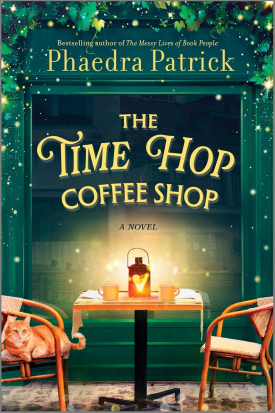Abraham Verghese Books In Order
Book links take you to Amazon. As an Amazon Associate I earn money from qualifying purchases.Publication Order of Standalone Novels
| Cutting for Stone | (2009) | Description / Buy at Amazon |
| The Covenant of Water | (2023) | Description / Buy at Amazon |
Publication Order of Non-Fiction Books
| My Own Country: A Doctor's Story | (1994) | Description / Buy at Amazon |
| Soundings: Doctors Life Age Aids | (1994) | Description / Buy at Amazon |
| The Tennis Partner | (1998) | Description / Buy at Amazon |
Publication Order of Collections
| Short Stories | (2006) | Description / Buy at Amazon |
Publication Order of Short Stories/Novellas
| Abscond | (2025) | Description / Buy at Amazon |
Publication Order of Anthologies
Abraham Verghese is a Stanford University vice chair for the practice and theory of Medicine provost professor and medical doctor.
He has also made his name as a physician and bestselling author who focuses on healing at a time when the human side of medicine has been overwhelmed by technology.
In 2014, he was the recipient of the Heinz Award and in 2015 he had the honor of being granted the National Humanities Medal by President Barack Obama.
Verghese was born in 1955 Addis Ababa to Indian parents that had been invited to Ethiopia to teach in the country by Emperor Haile Sellasie. As such, he spent much of his childhood in the Ethiopian capital and began his medical training in Addis.
When Sellassie was overthrown, he moved to the US to join his parents and worked as a nursing assistant and orderly in several nursing homes and hospitals. Thereafter, he went to Madras Medical College in India where he completed his medical education.
But his time as an orderly and his experiences of civil unrest would leave a significant mark on his work and life. Following his graduation from college, he left India and completed his medical residency in the US.
Between 1980 to 1983 he worked in Johnson City, Tennessee as an internal medicine resident. Thereafter, he moved to Boston City Hospital and the Boston University School of Medicine in the Northeast where he worked for two years.
It was while he was working in Boston that he began seeing the early signs of the HIV epidemic. He would then document the second epidemic in the rural area when he went back to Johnson City now working as an assistant professor of medicine.
He would then start working with a large number of patients in the small town even though the data suggested he wouldn’t have any or at most one in a year.
During this time, Verghese witnessed many tragic and premature deaths as it was a time when most that could be done was to treat and prevent opportunistic infections.
It was at this time that he began writing about his experiences and how he recognized that he had been living in the conceit of cure.
He also learned a lot about the difference between curing and healing. He learned that even when there is no cure, one can still be healed by coming to terms with illness, which will allow one to find acceptance and peace.
Abraham Verghese’s earlier experiences taking care of terminal patients of AIDS, as an orderly, and the many insights from the suffering witnessed and deep relationships he formed were very transformative.
He often felt that the unimaginative and sometimes cold language of science was unable to capture the nature of the experience for families and patients. It also failed to showcase the reality of his emotions about the experiences.
It was from these experiences that he decided to pen the 1994 published work “My Own Country.” As he grew more interested in writing, he would enroll at the Iowa Writers Workshop as he took time off from medicine.
In 1991, he earned his MFA and since then he has become a renowned author penning both fiction and non-fiction works.
His fiction works have been featured in prestigious publications such as “The Wall Street Journal,” the “New Yorker,” “Forbes,” “Texas Monthly,” “Granta,” “Texas Monthly,” and the “Atlantic” among many others.
He penned his first work “My Own Country” while he was chief of the Division of Infectious Diseases and professor of medicine at the El Paso-based Texas Tech Health Sciences Center.
“Cutting for Stone” by Abraham Verghese is an emotionally riveting and sweeping debut novel that is best described as a saga of American and Africa, home and exile, patients and doctors.
Shiva and Marion Stone are twin brothers that are the children of the secret relationship between a brash British surgeon who worked at an Addis Ababa hospital and a beautiful Indian nun.
Their mother had died in childbirth and after their father disappeared, they had become bound together by a shared love for medicine and a preternatural connection.
The twins become adults just as the country is on the brink of revolution which means that their lives and futures are in peril. However, it is not the politics but rather a love for the same woman that will be their undoing.
Marion who just graduated, flees Ethiopia and heads to the US where he works as an intern in an overcrowded and underfunded hospital in New York City.
When his past comes back to haunt him, Marion is forced to entrust her life to two men he thought he would never have to deal with: the brother that betrayed him and his surgeon father who abandoned them when they were kids.
Abraham Verghese’s “The Covenant of Water” is a work that is set over nearly eight decades between 1900 to 1977. The novel is set in Malabar Coast in the small town of Kerala in South India.
It follows a family over three generations as they suffer a peculiar affliction. Every generation of the family has at least one member dying of drowning and in Kerala, this is highly likely given that everywhere you look there is water.
The family is known for its Christian faith that goes back to the times of the apostles even though times have been changing.
The family’s matriarch is a woman known as Big Mother or in the local language Big Ammachi. Over the course of several years, she will be a witness to some incredible changes.
Verghese showcases his exceptional cases as he writes a deeply moving story full of fantastic humorous moments, and interesting medical ingenuity.
He also pens characters who are full of life as he evokes India through the earliest years of the twentieth century to the latter years. The work is a hymn to progress in human understanding and medicine.
“My Own Country” by Abraham Verghese is a story about medicine set in the American heartland that also talks about confronting one’s deepest fears and prejudices.
Johnson City is a small urban center in eastern Tennessee’s Smoky Mountains which for a long time seemed like it was not part of modern life in America.
But then the local hospital gets its first AIDS patient and it seems what had been thought to be an urban problem has arrived in Johnson City.
Abraham Verghese is a young Indian doctor that was employed in a hospital in the city that was a specialist in infectious diseases.
By necessity, he becomes the local expert who has to deal with shocking numbers of patients whose stories threaten to take over his life and his mind.
Verghese brings a singular perspective to the city as he brings in his unique abilities. He is an outsider who is better able to communicate with people who are often suspicious of local practitioners.
Above everything, he is a writer of compassion and grace who determined that what was happening in the city was both a spiritual and medical emergency.
Book Series In Order » Authors »


 Any issues with the book list you are seeing? Or is there an author or series we don’t have? Let me know!
Any issues with the book list you are seeing? Or is there an author or series we don’t have? Let me know!
I am a doctor and avoid books by and about doctors and medicine. MISTAKE! At least when it comes to books authored by Abe Verghese, a good and compassionate and exceedingly bright man. The subject matter is irrelevant to this man who could create masterpieces about any subject. I have read every book and will be rereading them again.
I have read both Covenant and Cutting. He is indeed a great writer.
I read Covenant first, unaware of Cutting. As it turned out, the flow seemed logical to me. What do you say about that? LOVED both. You are so incredibly talented.